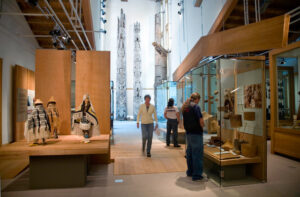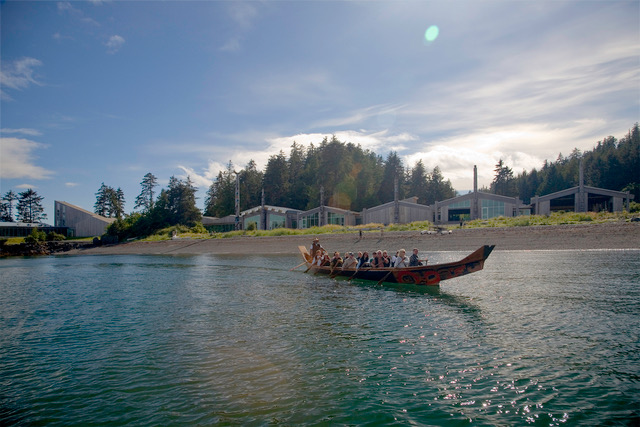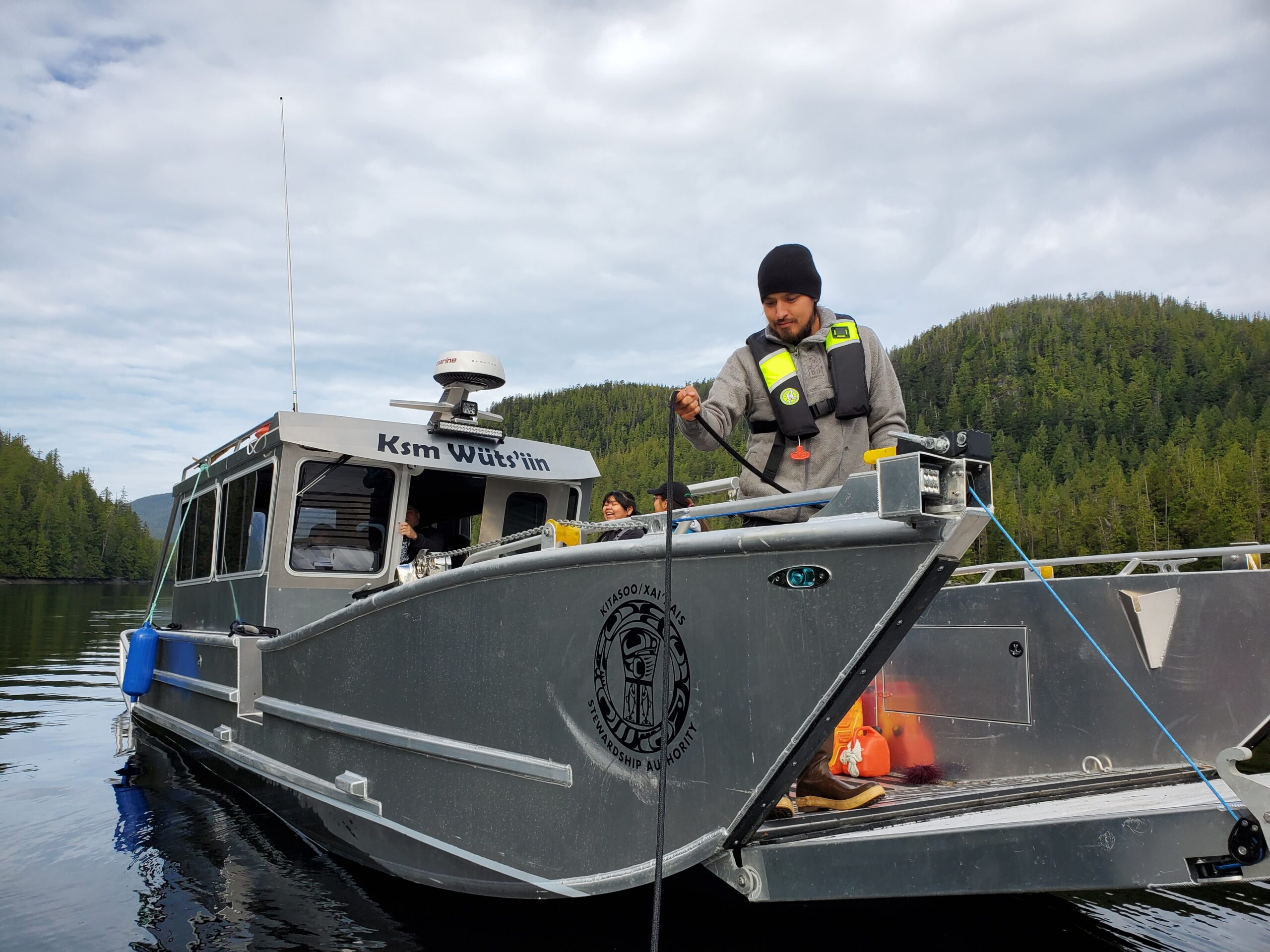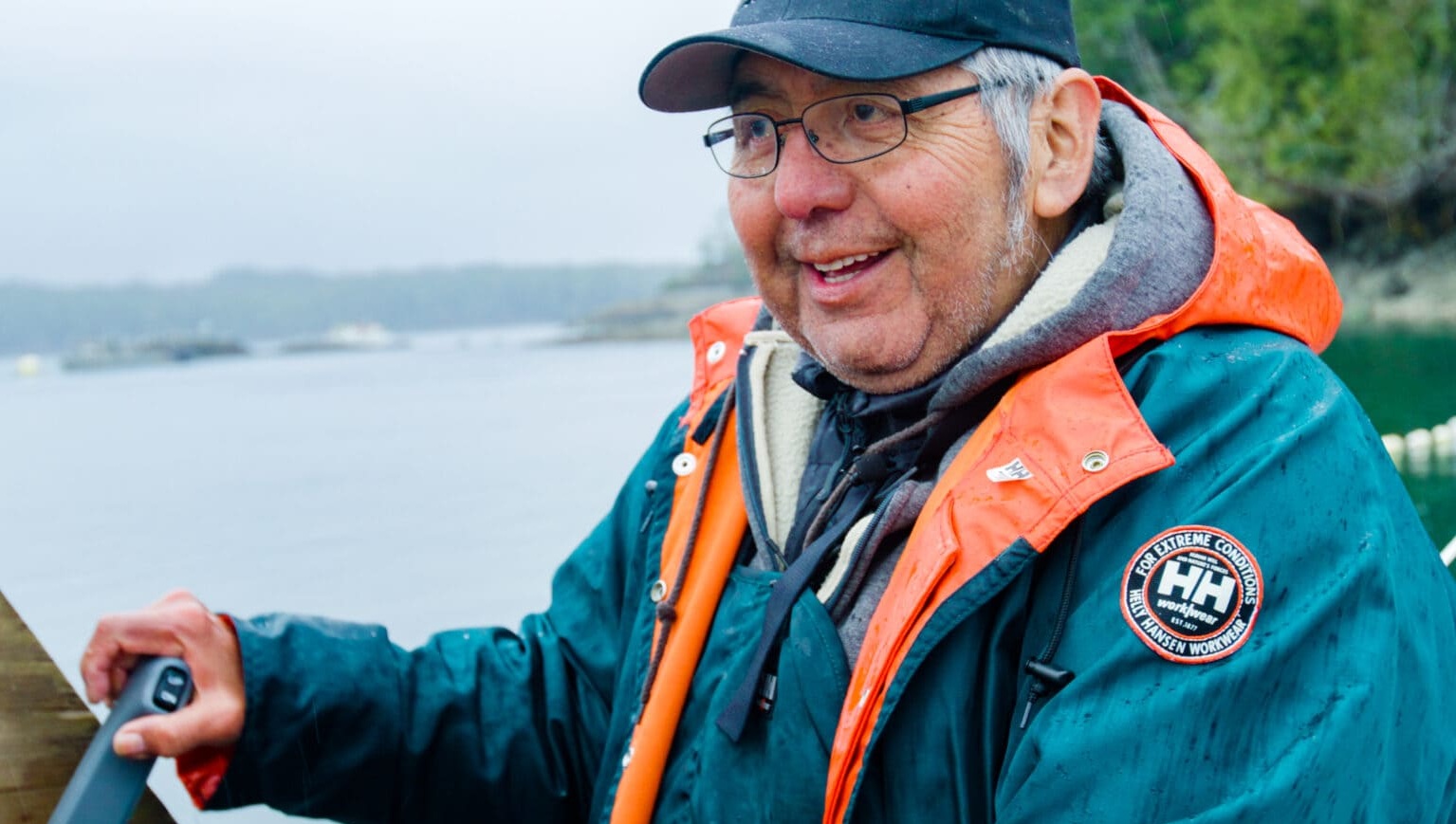COVID-19 closures of Indigenous social enterprises are having far-reaching impacts on local economies and communities on the North and Central Coast and Haida Gwaii.
The Haida Heritage Centre at Kay Llnagaay closed its doors on March 17 as the Haida Nation took swift action to declare a State of Emergency to protect the community from a COVID-19 outbreak.
Gid Uuwans Dana Moraes, from the Kay’aahl Laanas of the Haida Nation, is the Haida Heritage Centre’s Executive Director. With the majority of its income generated through tours, admissions and rentals, she says, the Centre has lost 100 per cent of its revenue, laid off nine staff members, including summer students, and is faced with having to refund tours booked a year in advance.
Moraes say heritage and cultural centres provide far-reaching social and economic benefits to communities and yet many aren’t eligible for federal recovery funds.
“The Haida Heritage Centre is really a hub for our community,” says Moraes. “There’s a lot of tourist organizations that do tours or operate from the Centre. Local artists sell their jewellery and exhibit their artwork. We host community events, weddings, meetings and cultural celebrations.”
The Centre received federal and provincial emergency business loans, but Moraes says they’re not enough. “Even if we do not open, we need $30,000 to $50,000 just to stay above water. We’re hoping for money coming down the line for heritage and cultural facilities.”
“I think a lot of Indigenous tourism businesses are going to need grants to survive.”
While the next two years will be challenging for the heritage centre, Moraes says the COVID-19 State of Emergency measures are in place to protect Haida language and culture. “A healthy financial economy has healthy humanity,” she says. “And a healthy economy is contingent on healthy language, arts and culture.”
Jisgang Nika Collison from the Kay’aahl Laanas of the Haida Nation is the Executive Director of the Haida Gwaii Museum based in the Haida Heritage Centre. When the Museum closed its doors, she says it was forced to cut its budget by $300,000 and lay off two full-time and one part-time employees.
The Museum has been operating since 1976 and Collison is grateful for arts funder support during these uncertain times. “All that grant-writing has culminated in someone having our back. We have to really celebrate the arts and culture world.”
While cultural funders have been adaptive and flexible, she says more action is needed by government to support a tourism and culture sector that contributes billions to the Canadian economy.
“The Indigenous community funding, and the tourism and arts and culture funding, is the last to roll out. I think it still mirrors the societal constructs. It’s not lost on us,” Collison points out.

More than 85 per cent of the Museum’s budget – about $800,000 – goes directly back into the local economy. “We have Trading House for artists, we hire locals and local contractors, artists get fees from exhibitions, and we buy and invest locally wherever we can,” she explains. “That’s a lot of money to put back into the community.”
The Museum is adapting to the current crisis by upgrading to e-commerce for its Trading House gift shopsales, exploring online programming, and focussing on a plan for the timing and messaging around economic recovery.
“No one knows what the future’s going to look like,” she says. “Anyone who thinks we’re going back to pre-March 17 is going to have to be very patient. We need to do lobbying around what is going to work best for northern tourism businesses and the arts and culture community.”
“A huge part of Haida culture is hosting. We love having guests,” Collison adds. “But obviously, the safety of our elders and of the islands people and Haida art and culture is paramount. That’s what has to happen right now.”
“We look forward to when we can invite our guests back when the time is right.”


